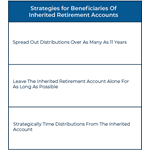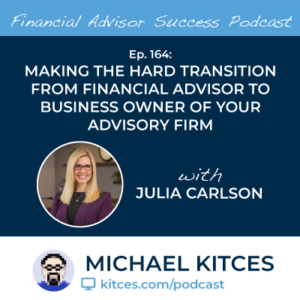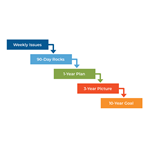For most financial advisory firms that seek to grow, it takes a significant commitment of time to market to, attract, and ultimately close prospective new clients. But as advisory firms grow, the cost of that time it takes to attract clients through marketing efforts and close them through sales efforts becomes commensurately more expensive as the business owner’s own time becomes more valuable. Which can be problematic for firms that want to grow, and the cost to acquire new clients becomes more expensive as the business (and cost of that time) grows, becoming inherently less scalable the larger the business gets … unless the firm updates its marketing and sales methods to match the firm’s (newfound) size and resources.
In this guest post, Angie Herbers – Chief Executive and Senior Consultant at Herbers & Company, an independent management and growth consultancy for financial advisory firms – explains why advisory firms need to adapt the sales engagement methods that they use if they want to continue growing in a sustainable (and time-cost-effective) manner. As notably, while industry benchmarking statistics suggest that an average financial advisory firm will spend about 3% of revenue on marketing, these numbers only include direct marketing expenditures (e.g., online ads, consultant expenses, etc.), and don’t include the actual value of the advisor’s potentially-quite-costly time spent on acquiring clients (e.g., attending networking events, meeting with prospects, etc.). Furthermore, as a financial advisor’s firm grows and the advisor gains experience and expertise, their time generally becomes more valuable; thus, if they spend the same amount of time on client acquisition as they did when their time was worth less, the total cost actually spent on marketing can significantly increase!
In light of this growing premium on an advisor’s time as a part of the marketing and sales process, how should an advisor most efficiently spend their time on business development efforts? To address this, it’s important to consider the three primary processes in any financial advisory firm: A Marketing process to establish awareness that the firm exists, a Sales process to engage prospective clients, and a Client Service process, to cultivate lasting trust with clients and to give them a reason to stay with the firm. While many firms focus primarily on the Marketing or the Client Service process to address growth problems, the reality is that, more often than not, problems with growth (and time-cost-consuming nature) reside mainly in the Sales process – the stage in client acquisition that begins when a prospect schedules a first appointment, and ends with a signed contract.
For most advisory firms, there are generally three methods of engagement an advisor can use in the sales process. The best method for any firm to use will often depend on the approximate revenue of the firm. The “Do” Method involves actually doing something for the prospective client to show them what they might expect to receive from the firm and is most valuable for newer firms (generally those with less than $750,000 in annual revenues) who have not yet established a brand identity. Clients seeking these firms are looking for value and are most interested in what the firm has to offer them. The “Show” Method is less labor-intensive and involves showing samples of what the firm has to offer to the client (e.g., a sample financial plan or investment policy statement); in other words, these firms are typically well-established and can rely on their brand value with compelling stories, supported by “showing” what they offer. While this is more efficient than the “Do” Method, it does still require time to prepare samples to show a target clientele and is often more appropriate for firms with annual revenues between $750,000 and $3 million. The “Tell” Method is the most time-efficient and relies on an advisor’s own confidence in the firm to tell the client specifically how they will address the client’s needs. There is no “free work” done or samples offered because an advisor in a firm with more than $3M in annual revenue can generally rely on their firm’s brand value and the story behind the firm alone to establish trust with a new client. Which is important, because considering the high value of an advisor’s time at this level, (still) using the “Do” or “Tell” methods can be exponentially more expensive (than it may have been when the firm had less revenue and the advisor’s cost of time was less).
Ultimately, the key point is that the Sales process is a distinct step from the Marketing and Client Service processes and that, for many firms, growth problems can most effectively be addressed by adjusting how the Sales process is carried out. While newer firms with less revenue can benefit most using the “Do” method of offering free work to prove to clients they are worthy of their trust and engagement, firms with more revenue can benefit from the more efficient “Show” method of offering work samples and demonstrations to back up their firm’s brand identity, while firms with revenue generally over $3M are often the most well-established and generally have widespread brand recognition… that advisors can leverage to simply “Tell” a client why they should be engaged, ideally (and cost-effectively) ‘closing’ the deal after just one meeting!










